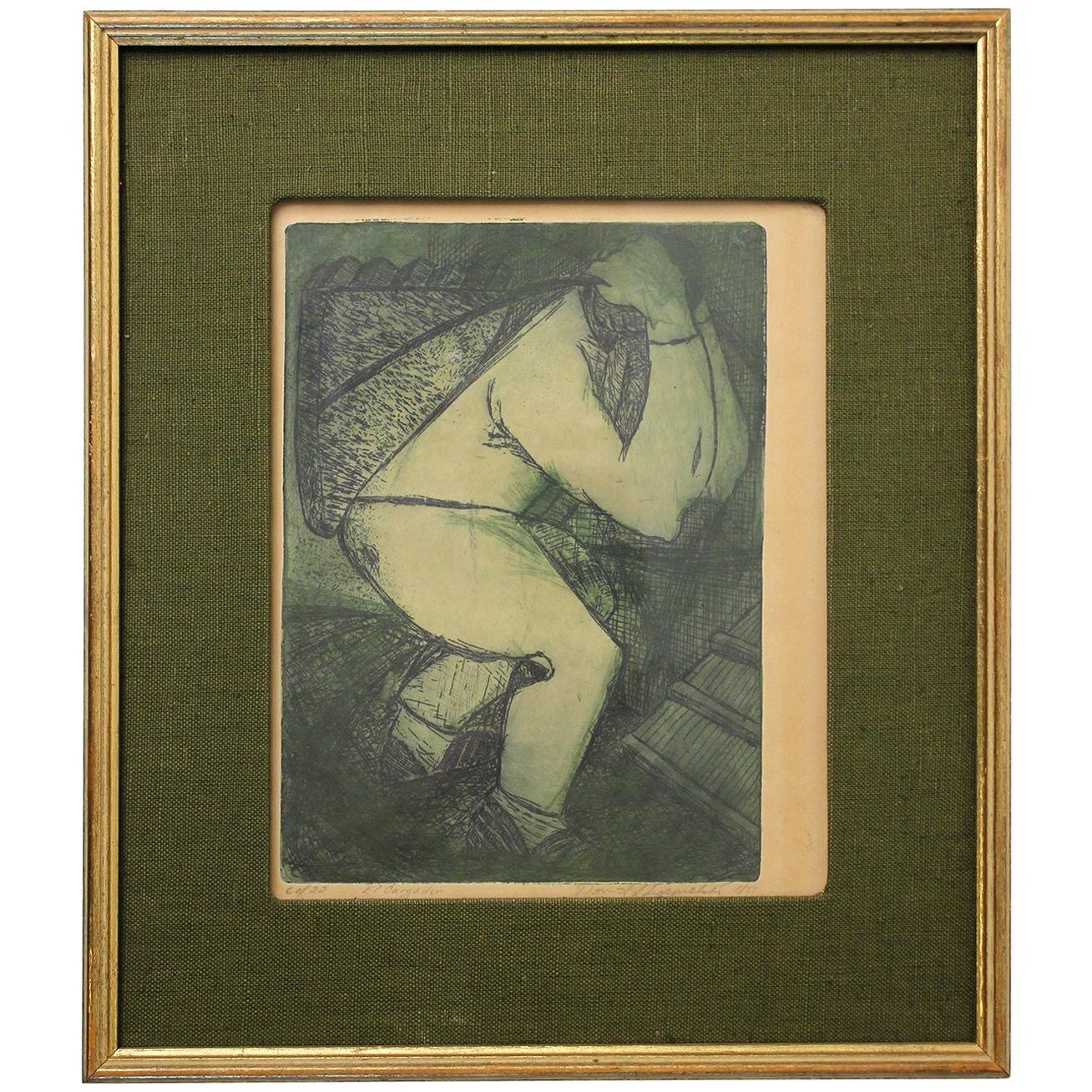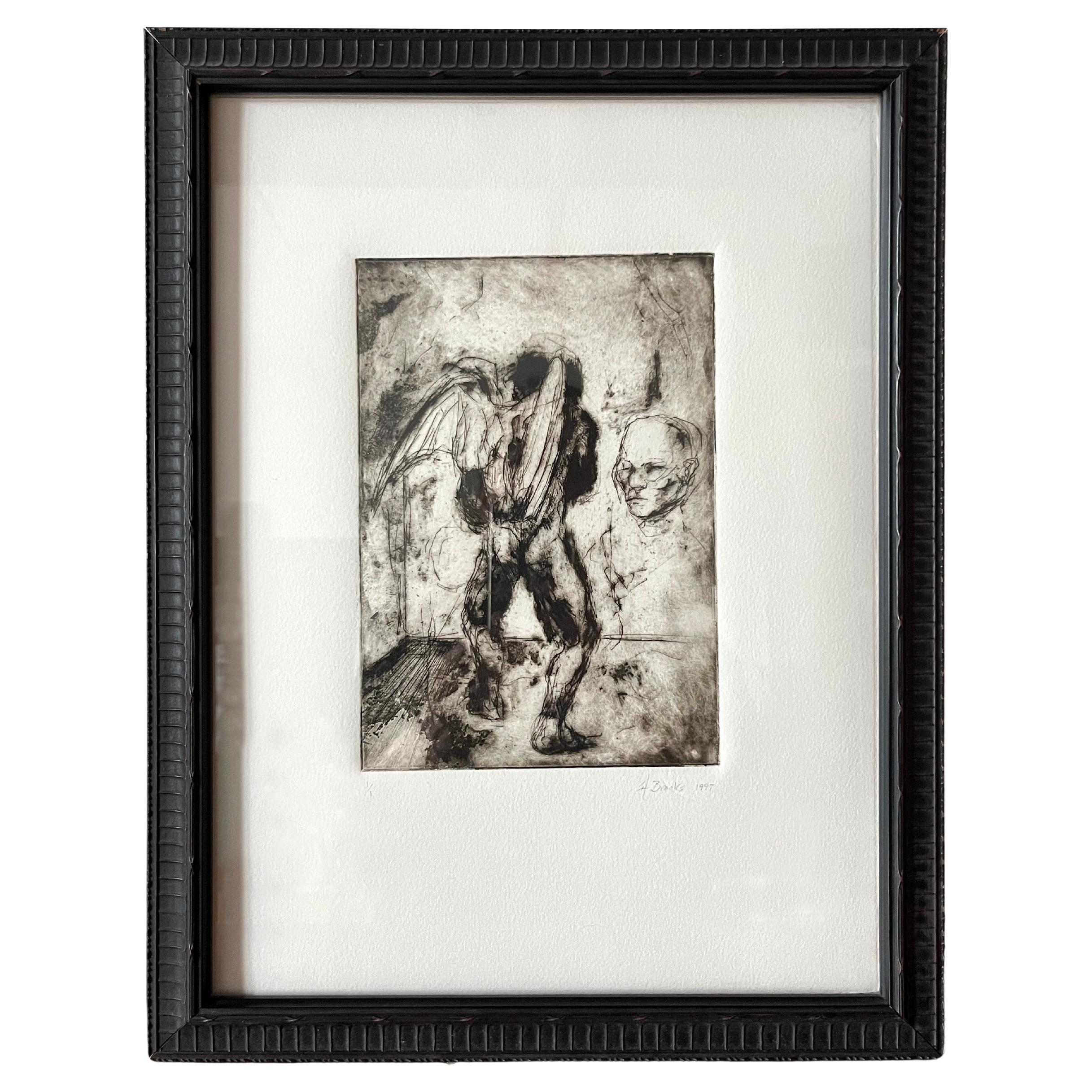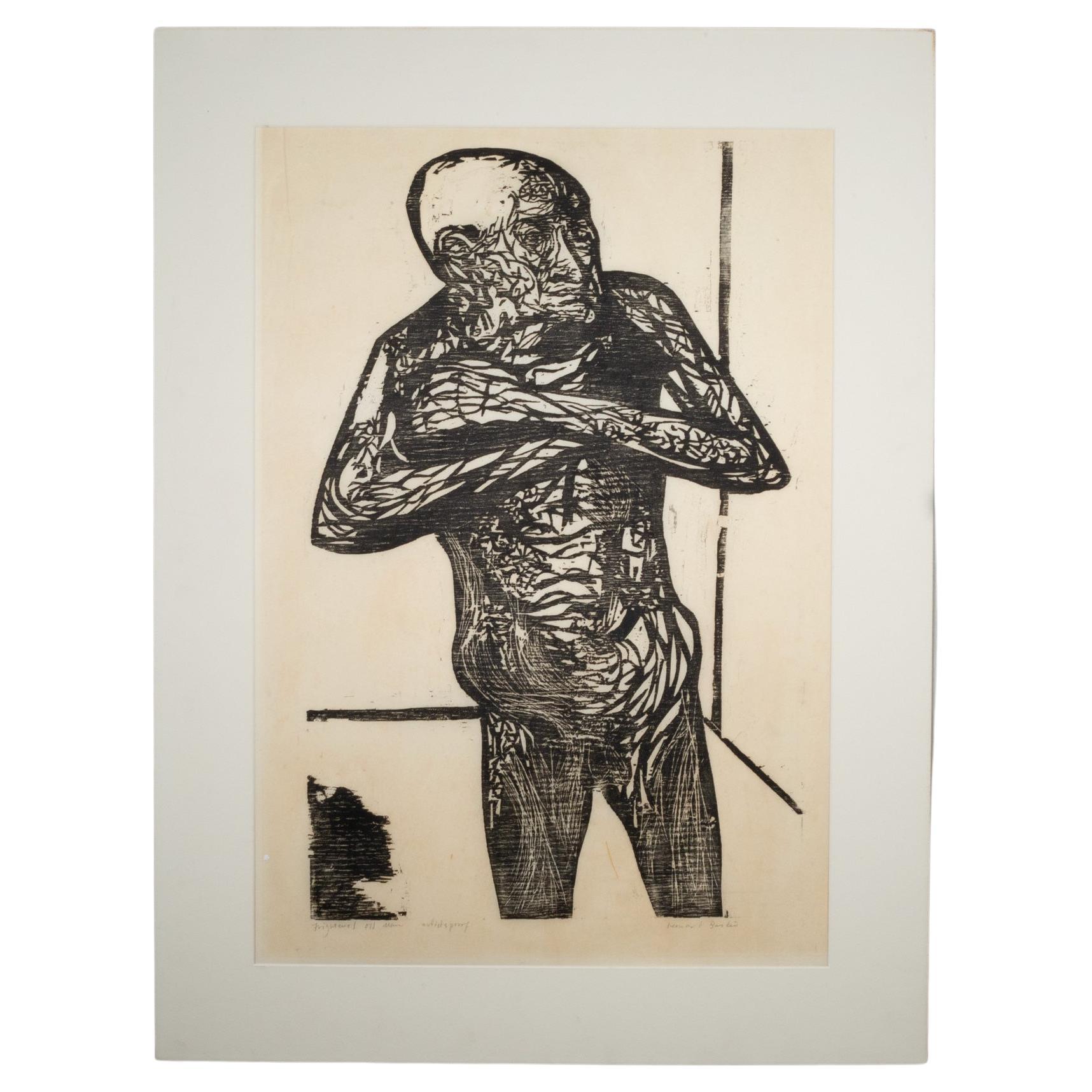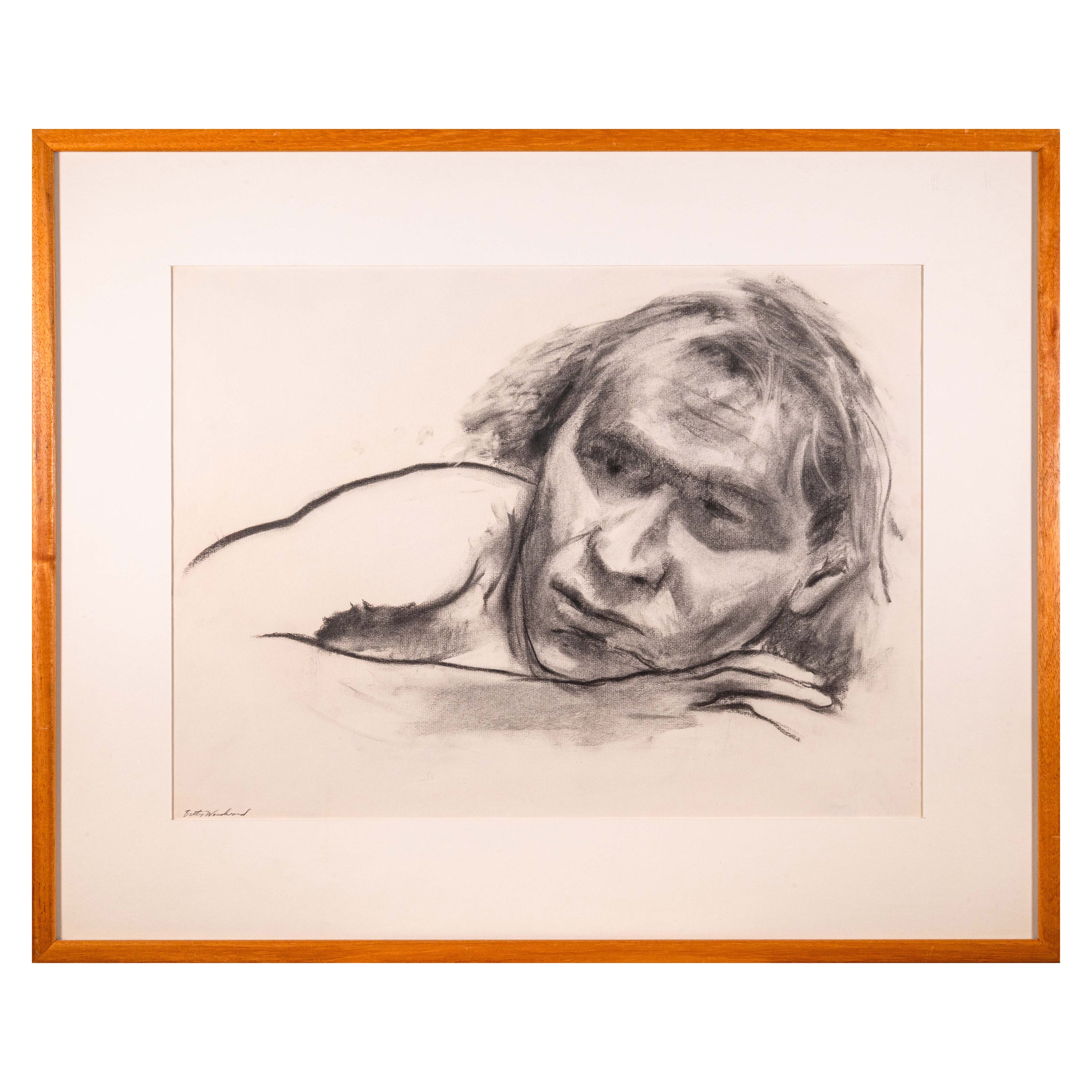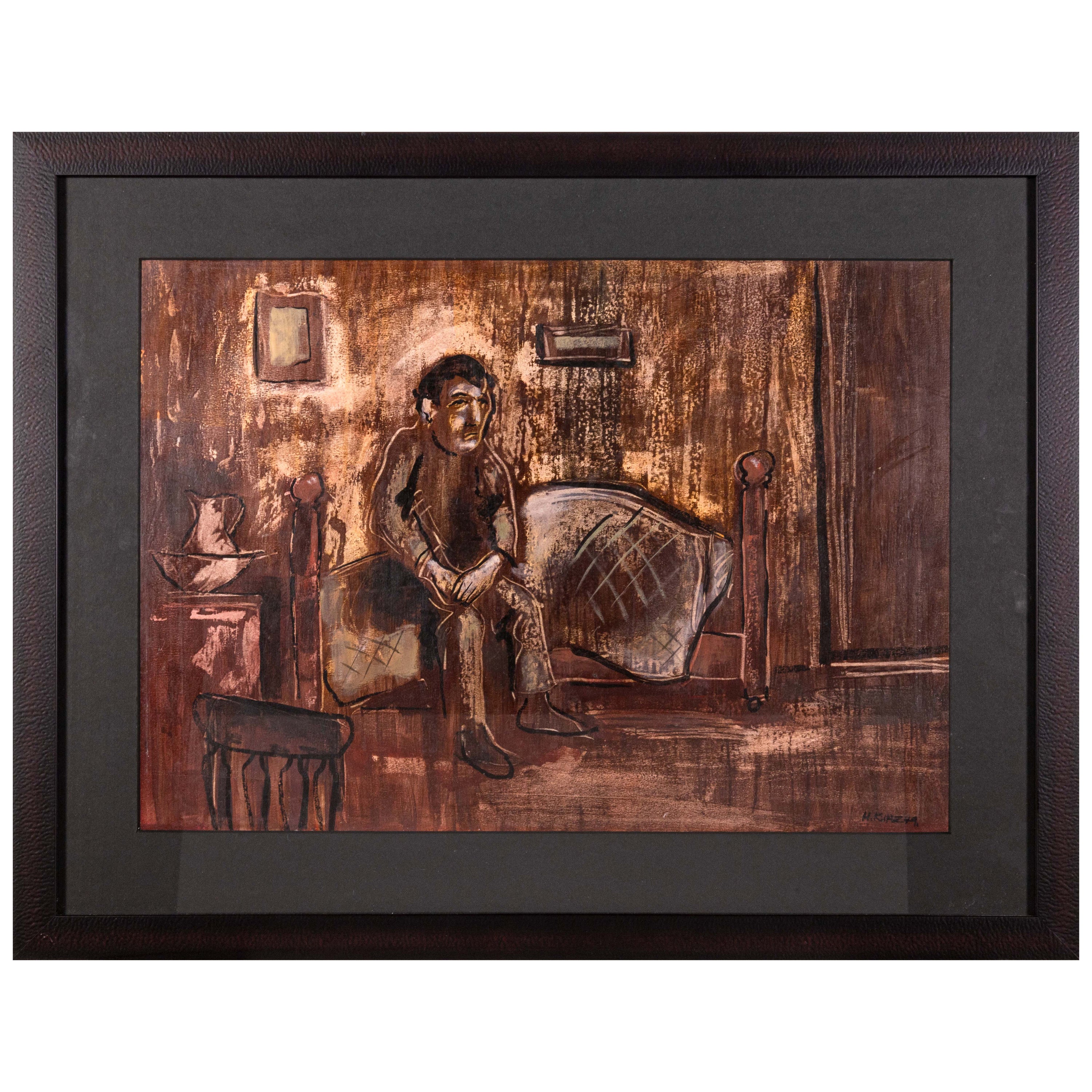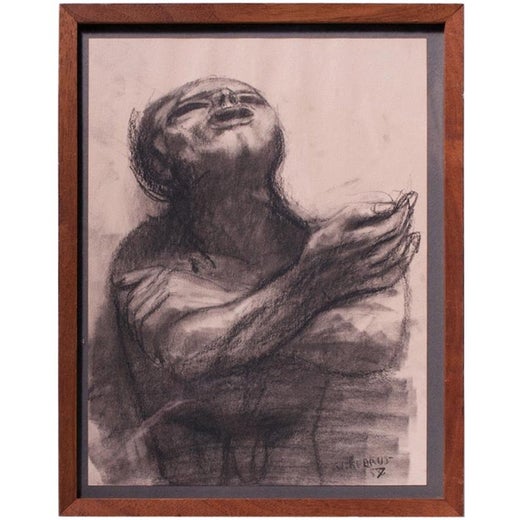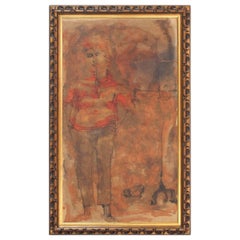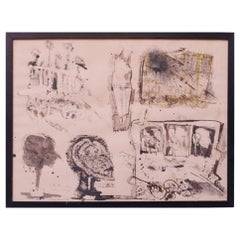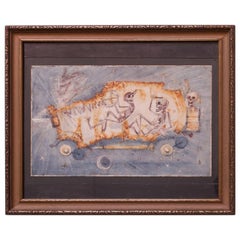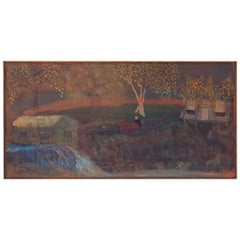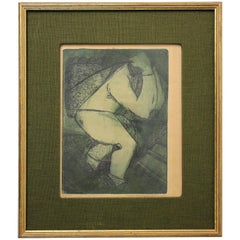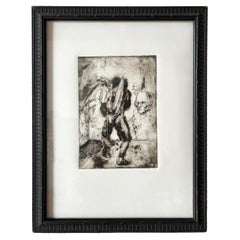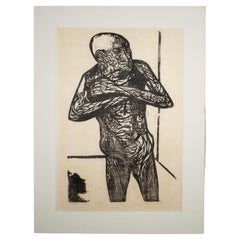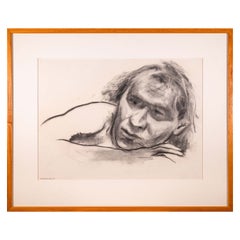James Joseph Kearns "Despondent Man" Etching
About the Item
- Creator:James Joseph Kearns (Artist)
- Dimensions:Height: 13.75 in (34.93 cm)Width: 10.75 in (27.31 cm)Depth: 1 in (2.54 cm)
- Style:Modern (Of the Period)
- Materials and Techniques:Paper,Etched
- Place of Origin:
- Period:
- Date of Manufacture:1957
- Condition:
- Seller Location:Brooklyn, NY
- Reference Number:1stDibs: LU1444219109352
James Joseph Kearns
James Joseph Kearns is an outstanding modern American sculptor, painter and printmaker. Kearns studied at the Art Institute of Chicago, DePaul University and at the University of Chicago from 1946–51. Kearns's first one-man exhibition took place in New York in 1956 and since that time his sculptures, paintings and etchings have been included in exhibitions at the National Institute of Arts and Letters, the Pennsylvania Academy of Fine Arts and the Whitney Museum in New York. In 2006, the Rider University Art Gallery, Lawrenceville, New Jersey held an exhibition that showcased a retrospective of 50+ Years of James Kearn's drawings and paintings. Museums that have purchased his art include the Museum of Modern Art and the Smithsonian Museum in Washington, D.C. The Fine Art Museum at the Western Carolina University and the Butler Institute of American Art Museum lists an impression of Man on Stilts in their collection. In 1960, Kearns became a professor at the School of Visual Arts, New York. He has also illustrated several important books, including, Can These Bones Live in 1960 and The Heart of Beethoven in 1962.
- ShippingRetrieving quote...Shipping from: Brooklyn, NY
- Return Policy
More From This Seller
View AllVintage 1950s American Mid-Century Modern Paintings
Paint
Vintage 1960s American Drawings
Paint
Vintage 1950s American Paintings
Paint
Vintage 1970s American Folk Art Paintings
Paint
Vintage 1960s American Post-Modern Paintings
Paint, Paper
Vintage 1970s American Paintings
Paint
You May Also Like
Mid-20th Century Drawings
1990s American Other Drawings
Paper
Mid-20th Century American Mid-Century Modern Contemporary Art
Paper
Vintage 1960s American Drawings
Paper
1990s American Expressionist Drawings
Paint
Early 20th Century Unknown Drawings
Paper
